
Do you have a question about the Ford 2006 Escape Hybrid and is the answer not in the manual?
| Brand | Ford |
|---|---|
| Model | 2006 Escape Hybrid |
| Category | Automobile |
| Language | English |
Guidance on initial driving to ensure proper break-in of new vehicle components.
Details on how the vehicle starts, operates, and transitions between power sources.
Explains how to start moving, transmission operation, and unique hybrid characteristics.
Explanation of how the vehicle's transmission shifts and operates.
Tips on driving habits and climate control usage to maximize fuel efficiency.
Important information regarding emission warranty and special instructions.
Information on vehicle data collection for diagnostics and crash investigations.
Prohibitions on using the vehicle for snowplowing, ambulances, and cell phone use.
Explanation of various symbols displayed on the vehicle's dashboard and controls.
Explanation of dashboard warning lights and their meanings for vehicle conditions.
Description of vehicle gauges for speed, battery, fuel, and engine RPM.
Details on AM/FM stereo, cassette, CD, and MP3 player functions and controls.
Specific functions of the premium audio system including DSP and volume controls.
Information on using the navigation system, safety precautions, and map data.
Controls for fan speed, air flow direction, and temperature adjustment.
Operation and function of the rear window defroster control.
Operation of parking lamps, headlamps, and autolamp features.
How to activate and deactivate high beams and use the flash-to-pass feature.
Explanation of DRL activation and limitations for visibility.
Information on replacing exterior and interior bulbs with correct types and trade numbers.
Controls for windshield wipers, washers, and mist function.
Instructions on how to adjust the steering wheel for driver comfort.
Usage and limitations of the 12V and 110V power outlets for accessories.
Operation of power windows, one-touch down, and window lock feature.
Instructions for adjusting and folding power side view mirrors.
Instructions on setting, resuming, increasing, and reducing speed control.
Display of vehicle information, system status, and warnings.
Information on vehicle keys, programming, and replacement.
Operation of power door locks and the inhibit feature.
How to engage and disengage childproof door locks.
Operation of the remote entry system, including lock/unlock and panic features.
Details on the engine immobilization system and theft indicator.
Adjustment and features of front seats, head restraints, and heated seats.
Adjustment, folding, and removal procedures for rear seats and head restraints.
Details on airbags, pretensioners, sensors, and system operation.
Guidelines for using child seats, booster seats, and LATCH systems.
Handling differences and rollover risks associated with utility vehicles.
Explanation of tire quality grades: Treadwear, Traction, and Temperature.
Procedures for checking tire pressure, inspecting for damage, and proper inflation.
Guidelines for using correct size and type of replacement tires and wheels.
Steps to determine maximum payload and towing capacity.
Description of ignition key positions and vehicle starting procedures.
Information on brake operation, ABS system, and warning lights.
Details on the Electric Power-Assisted Steering (EPAS) system.
Precautions for driving utility vehicles and handling different surfaces.
Details on brake-shift interlock and gearshift positions.
How the reverse sensing system warns of rear obstacles.
Operation of the 4WD system and related message center alerts.
Information on Ford's complimentary roadside assistance program coverage.
Operation of hazard flashers for emergencies and safety.
Location and function of safety shut-off switches after an accident.
Guide to fuse amperage ratings, colors, and locations.
Procedure for safely changing a flat tire and using spare tires.
Instructions for jump-starting the low voltage and high voltage batteries.
Recommendations for vehicle towing procedures and equipment.
Steps for obtaining warranty service and contacting Ford customer support.
Information on the arbitration program for warranty disputes.
Details on purchasing and benefits of the Ford Extended Service Plan.
Guidance for vehicle service and registration when traveling abroad.
How to report vehicle defects to NHTSA and Ford Motor Company.
Proper methods for washing the vehicle's exterior to prevent damage.
Recommendations for waxing and paint sealant application.
Cleaning instructions for wheels, covers, and engine compartment.
Cleaning procedures for instrument panel, interior trim, and seats.
Care and cleaning instructions for leather seating surfaces.
General advice on servicing, safety warnings, and high voltage component safety.
Diagram and list of major components in the engine compartment.
Instructions for checking and adding washer fluid, engine oil, and coolant.
Details on fuel filter, fuel handling safety, octane, and quality.
Techniques for measuring and calculating fuel economy.
Checking brake fluid and procedures for brake pad replacement.
Checking transmission fluid and replacing the air filter element.
Basic maintenance checks and inspections for owners and service technicians.
Specifies the maximum interval for engine oil changes.
Recommended intervals for changing engine coolant.
Lists of monthly and semi-annual checks for vehicle components and fluids.
Recommended multi-point inspections for regular vehicle checks.
Maintenance schedules based on mileage for U.S. and Canadian vehicles.
Maintenance adjustments required for specific driving conditions like towing or off-road.
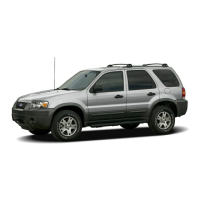
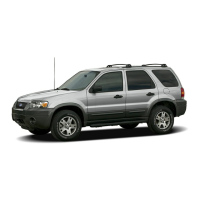
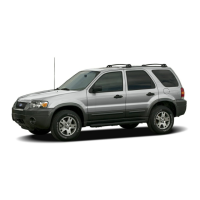
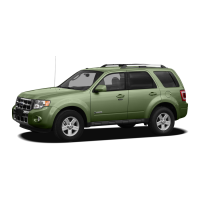
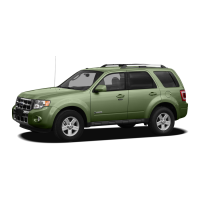
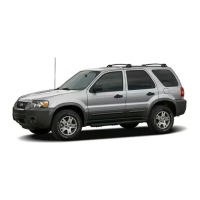
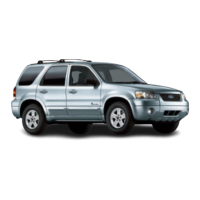

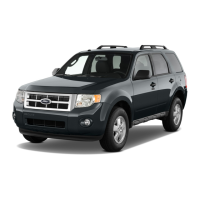


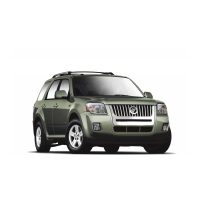
